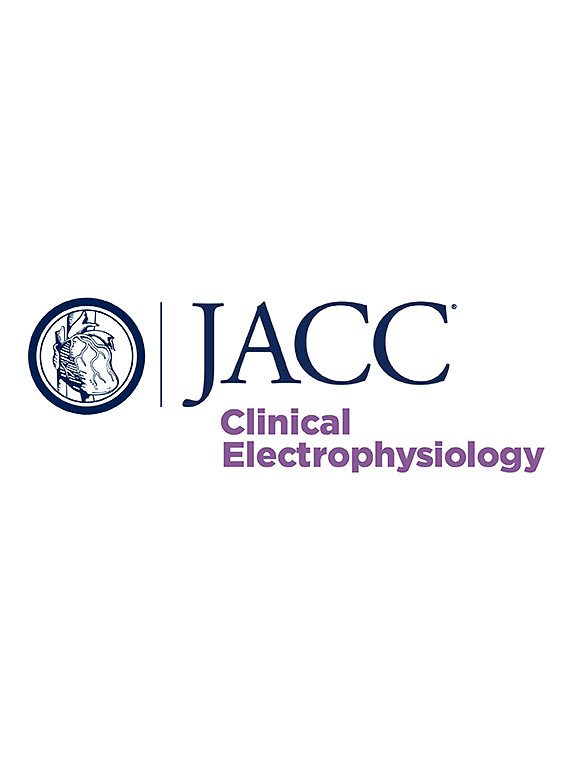促进室性心动过速消融的成像技术:心内超声心动图、计算机断层扫描、磁共振和正电子发射断层扫描。
IF 8
1区 医学
Q1 CARDIAC & CARDIOVASCULAR SYSTEMS
引用次数: 0
摘要
导管消融是治疗室性心动过速(VT)的一种行之有效的策略。然而,如何识别和鉴定用于定向消融的致心律失常基质仍是一项挑战。VT 时的电图异常和起搏反应是识别基质的经典且最有效的方法。然而,心肌的三维特性、非传导性组织以及边界区或穿过非传导区的异质传导性组织,都会使电取样和识别对 VT 至关重要的组织变得不容易。心内超声心动图对于确定解剖结构、检查导管的进路和接触、评估消融过程中的组织变化,甚至是作为回声区域的潜在基质都至关重要,但与先进的模式相比,后者缺乏特异性。近几十年来,心脏磁共振、计算机断层扫描和正电子发射断层扫描已成为 VT 消融术围术期评估的重要工具。心脏磁共振具有无与伦比的软组织和时间分辨率,擅长识别由心肌梗死、纤维化、炎症或浸润性肌病引起的间隙扩大。计算机断层扫描具有出色的空间分辨率,最适合识别解剖变异,包括心肌壁厚度、血栓和脂肪瘤变。正电子发射断层扫描擅长鉴别基质,包括淀粉样变性、肉样瘤病和其他炎症基质。这些成像模式对于评估心律失常基质、指导最佳入路策略和评估消融疗效至关重要。虽然在特定情况下显然是有益的,但仍需要进一步的临床试验来提高可推广性并优化心脏成像在 VT 消融中的整合。本文章由计算机程序翻译,如有差异,请以英文原文为准。
Imaging to Facilitate Ventricular Tachycardia Ablation
Catheter ablation is a well-established and effective strategy for the management of ventricular tachycardia (VT). However, the identification and characterization of arrhythmogenic substrates for targeted ablation remain challenging. Electrogram abnormalities and responses to pacing during VT provide the classical and most validated methods to identify substrates. However, the 3-dimensional nature of the myocardium, nonconductive tissue, and heterogeneous strands of conductive tissue at the border zones or through the nonconductive zones can prohibit easy electrical sampling and identification of the tissue critical to VT. Intracardiac echocardiography is critical for identification of anatomy, examination of catheter approach and contact, assessment of tissue changes during ablation, and even potential substrates as echogenic regions, but lacks specificity with regard to the latter compared with advanced modalities. In recent decades, cardiac magnetic resonance, computed tomography and positron emission tomography have emerged as valuable tools in the periprocedural evaluation of VT ablation. Cardiac magnetic resonance has unparalleled soft tissue and temporal resolution and excels at identification of expanded interstitial space caused by myocardial infarction, fibrosis, inflammation, or infiltrative myopathies. Computed tomography has excellent spatial resolution and is optimal for identification of anatomic variabilities including wall thickness, thrombus, and lipomatous metaplasia. Positron emission tomography excels at identification of substrates including amyloidosis, sarcoidosis, and other inflammatory substrates. These imaging modalities are vital for assessing arrhythmogenic substrates, guiding optimal access strategy, and assessing ablation efficacy. Although clearly beneficial in specific settings, further clinical trials are needed to enhance generalizability and optimize integration of cardiac imaging for VT ablation.
求助全文
通过发布文献求助,成功后即可免费获取论文全文。
去求助
来源期刊

JACC. Clinical electrophysiology
CARDIAC & CARDIOVASCULAR SYSTEMS-
CiteScore
10.30
自引率
5.70%
发文量
250
期刊介绍:
JACC: Clinical Electrophysiology is one of a family of specialist journals launched by the renowned Journal of the American College of Cardiology (JACC). It encompasses all aspects of the epidemiology, pathogenesis, diagnosis and treatment of cardiac arrhythmias. Submissions of original research and state-of-the-art reviews from cardiology, cardiovascular surgery, neurology, outcomes research, and related fields are encouraged. Experimental and preclinical work that directly relates to diagnostic or therapeutic interventions are also encouraged. In general, case reports will not be considered for publication.
 求助内容:
求助内容: 应助结果提醒方式:
应助结果提醒方式:


